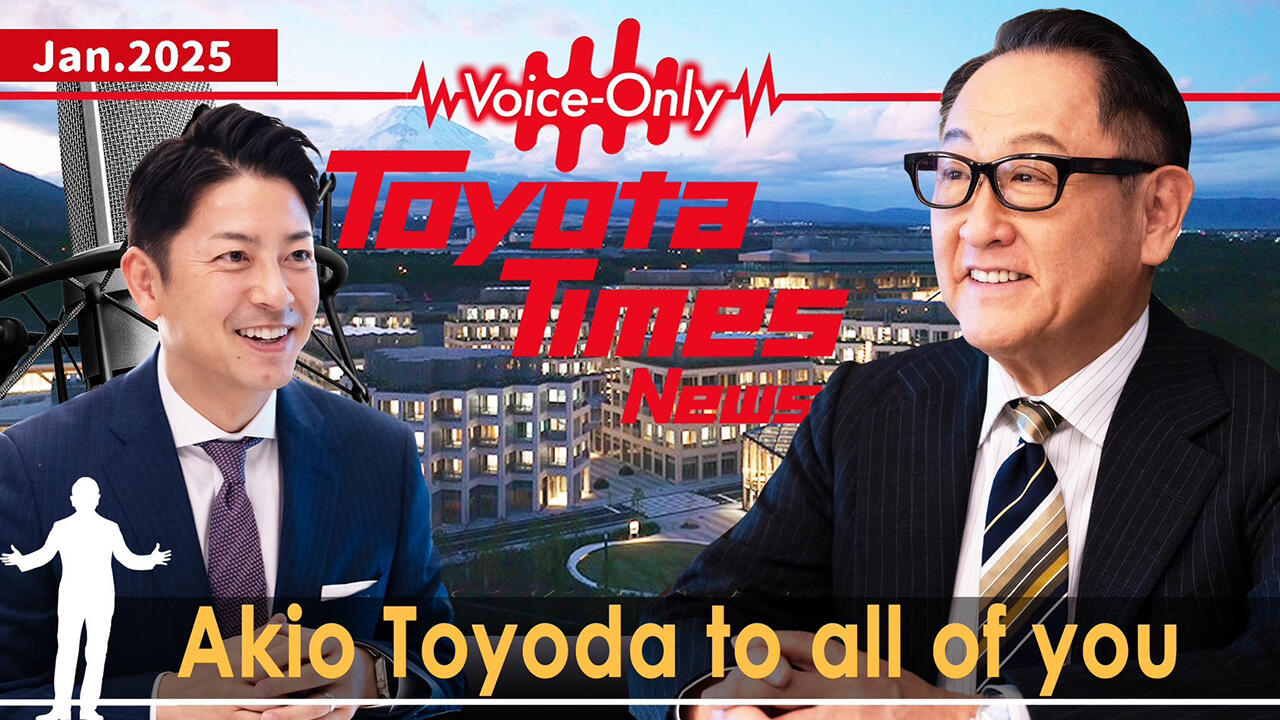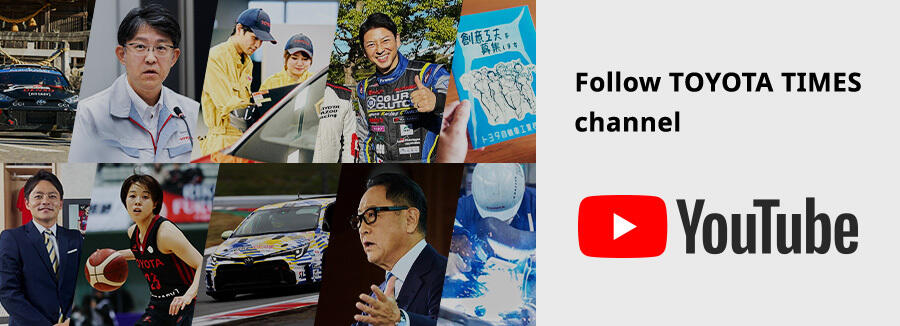
Five years after the concept was unveiled, Toyota's "test course for mobility" is finally set to begin demonstration trials. Chairman Akio Toyoda spoke about the journey so far, and his vision for the future.
Phase 1 completion is “just the starting point”
Tomikawa
The Phase 1 area is completed, and in the presentation, you showed the streets of Woven City.
You have been following the construction progress on the ground, so how does it feel to be at this point of announcing the completion of the Phase 1 area, and things finally getting underway?
Toyoda
My feeling is: what a great job they have done in these five years.
This is a first for everyone involved. And the parent company trying to make this happen is, of all things, a carmaker. We call it a test course for mobility, but there is no manual or anything to tell us what that means.
On top of that, when the groundwork began, we found a completely unexpected bedrock layer. At the base of Mount Fuji, where our plant once stood. That had to be broken up.
We wanted to create an underground logistics network, so that was essential.
Tomikawa
A crucial element.
Toyoda
But we had no idea that such a layer of bedrock lay beneath.
It really shouldn’t have been possible to go underground, but we overcame that challenge and finished this first phase. I truly think our team did an incredible job.
Tomikawa
You always say that, when there are no right answers, the way forward is to take on new challenges and create new formulas for finding solutions. And that’s exactly what they’ve achieved here.
Toyoda
I think so.
That’s why, for me, with the start of Phase 1, we have finally reached the starting point.
Five years from first announcing our plans—whether that’s a long time or a short time depends on who you ask, but having started with nothing, with no finish line in sight, I think we did well to get the job done in five years.
Tomikawa
At the same time, Woven by Toyota drew people from outside Toyota, including some who had worked in Silicon Valley, all coming together as one.
During my reporting, I found it interesting to see the Toyota philosophy firmly embedded and everyone working toward a shared goal, drawing on past traditions while also incorporating new aspects.
“This is a really good team”—A project underpinned by diversity and youth
Toyoda
I call it vision driven. When making this city, this test course for mobility, we began by creating a vision for what we wanted to do.
From there, it becomes about the means, and on that front too, I think we did a great job getting this far with such a diverse group centered around young talent.
In that sense, I’m very impressed by what has been achieved so far, but this is just the starting point.
Tomikawa
No doubt other challenges still lie ahead. You also mentioned that the project is centered around young talent.
Daisuke Toyoda serves as the head of Woven City. During our Hodo Station interview on February 23, 2021, I believe I asked you about Daisuke as well.
When I asked you what kind of figure he was, you replied, “Despite his youth, Daisuke is not afraid to give me his opinions. Other young people see this and feel that they too can express their thoughts, they don’t have to hide their views, and in that way, he serves as an adhesive.”
He has led the way on this project for five years, creating the start of a very impressive city. Seeing Daisuke’s work, what are your thoughts?
Toyoda
Daisuke certainly didn’t do it on his own. While he may have been the project leader, I think this group of people with different backgrounds and a shared vision did a great job as a team.
Coming to CES this time, Vice President Hiroki Nakajima and I planned a get-together with the team’s young members. Speaking with each of them over dinner, I found myself thinking again that this is a really good team.
Perhaps Daisuke being my son allows him to freely express his view. But the team atmosphere is even more so one where everyone can express their candid opinions. I never felt that anyone was worried about stepping on someone’s toes. Vice President Nakajima made the same comments.
He also said that hearing these open, unfettered discussions gave him a better understanding of Woven City.
Tomikawa
I see. Linking to our earlier subject, the 380,000 people at Toyota could also learn from that.
Toyoda
I think about 80% of the people at Toyota Motor Corporation still view Woven by Toyota as a subsidiary. In reality, we created a new company to do things that were not possible with Toyota’s size and functional divisions.
Despite being a motley collection of individuals with different nationalities, I feel that we have a good team for realizing our mission.
Akio’s thoughts on the meaning of “mobility”
Tomikawa
If you don’t mind me asking, quite often I hear my former colleagues in the media saying they don’t know how to interpret and explain the word “mobility”—could you once again share how you perceive it?
Toyoda
When I became president, I started calling on Toyota to “make ever-better cars.” At the time, various people asked me, “What do you mean by ‘ever-better cars?’”
I replied that this was for them to figure out, and I think the same is true for transforming into a mobility company.
It was me who said, “Let’s become a mobility company.” And it was me who said, “Let’s make ever-better cars.”
But Toyota is a collective of people with various talents. If someone like me, with my limited knowledge and experience, says, “This is how it has to be,” it stops us from moving forward.
Instead, we have a vessel for everyone’s ideas of what mobility could be.
When we talk about mobility, some people might picture cars being replaced by another kind of vehicle, while others will imagine how cars could evolve.
Today the iPhone is ubiquitous, right? Everyone knows what an iPhone is, but in the past you would have to carry a camera, a phone, a schedule, and reference books.
We went from a world where you carried all these items to being able to do everything on the iPhone.
Similarly, while mobility will likely include cars, I think people will naturally come to speak of mobility as something that adds some new value or function beyond driving, turning, and stopping.
It’s the same as when I said, “Let’s make ever-better cars.” I’m betting on that again.
Tomikawa
Interesting. So that’s your response.
Toyoda
I think that should make sense to people. In a few years, we will know what is meant by mobility from the kinds of products that emerge. I feel that we have established the platform for creating those products.
Tomikawa
Very interesting. Various people will explore what “mobility” means, and we can enjoy what comes out of it. That’s your standpoint.
Toyoda
In another interview today, I was asked, “Five years ago you said you were embarking on this project (Woven City), and now you’re back. If you were to return to CES in another five years, how do you want the city to look at that time?”
Tomikawa
That was from an American reporter.
Toyoda
What I would like to see is 2,000 people leading normal lives, while using many tools and devices that don’t exist today. A human-centered city, with everything integrated through mobility…
I feel like five years may not be enough time, but you never know. That’s part of the reason I would like people to follow Woven City’s journey.

